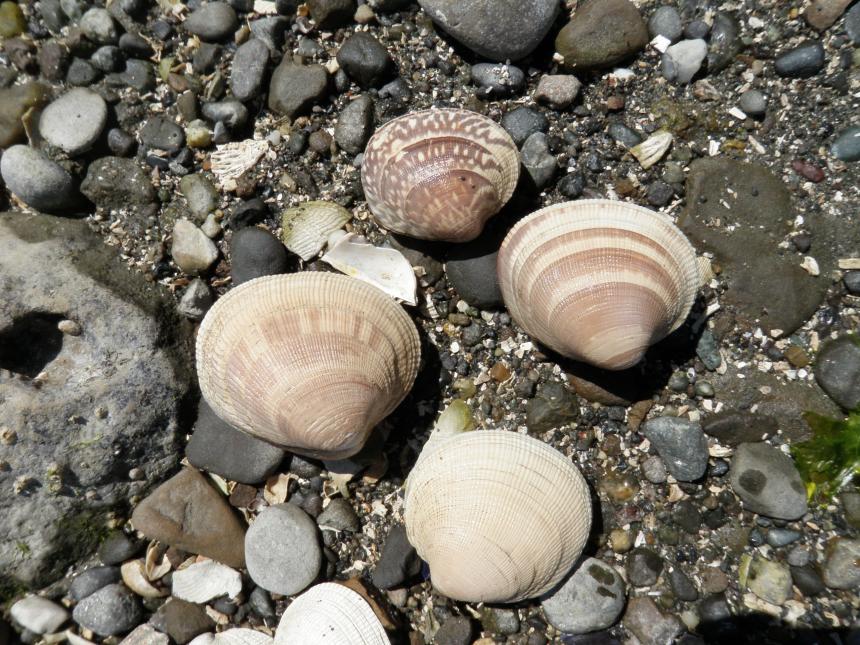Clams can be dug by hand or hand-operated fork, pick, rake, or shovel. Each digger must use a separate container to retain catch. Digging equipment may be shared. Clam holes must be refilled. To reduce clam mortality, please push any undersized clams into the refilled hole. Caution: Always check the local biotoxin status before harvesting via the biotoxin hotline (1-800-562-5632) or www.doh.wa.gov/shellfishsafety.
Description and Range
Physical description
Native littleneck clams have an oval to round shape and they grow up to 3½ inches long. The shell exterior exhibits concentric rings with radiating lines that form a lattice pattern. They may be cream or grey colored and may display a variety of different patterns. The anterior (lower) side of the hinge of the native littleneck clam typically has a pronounced ridge, whereas the same location on the Manila clam is indented.
Native littleneck clams are buried 4 to 6 inches deep in cobble, gravel, sand, or mud substrate and they normally occur in the mid-intertidal zone.
Geographic range
Native littleneck clams can be found from the Aleutian Islands, AK south to Baja California Sur.
Regulations
Licenses and permits
Anyone digging for clams in Washington must have a valid license that includes shellfish harvest. See the Sportfishing Rules Pamphlet for more information, or visit a license dealer.
Rules and seasons
Minimum size 1½ inches measured across longest distance of the shell. Daily combined limit of all clam species (excluding HORSE CLAMS and GEODUCKS) no more than 40 clams, not to exceed 10 pounds in the shell.
Recreational clam seasons are beach-specific and may change annually. Check this year’s seasons here: Public clam, mussel, and oyster beaches. Always check the DOH biotoxin status before harvesting.
